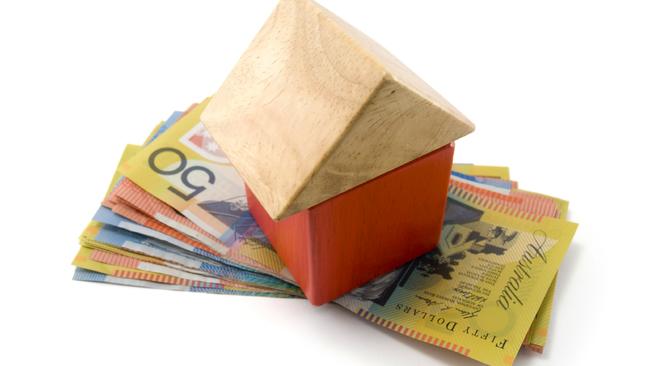Banks use interest rates as high as nine per cent to determine home loan serviceability
OUR low interest rate environment is just the “calm before the storm”, leading banks to drastically raise the rates used to assess borrowers’ repayment capacity.
Interest Rates
Don't miss out on the headlines from Interest Rates. Followed categories will be added to My News.
EXCLUSIVE
A LOW interest rate environment is simply the “calm before the storm” prompting lenders to drastically increase the interest rates used to determine whether customers can service their loans.
Interest rates as high as nine per cent — more than double what many borrowers are now paying — are being adopted by banks assessing the repayment capacity of borrowers once rates do rise.
But raising the bar on “mortgage serviceability interest rates” will make it harder for eager first homebuyers to get their foot on the property ladder.
Mortgage broking firm homeloanexperts.com.au’s Otto Dargan said the financial regulator “knows that low rates are the calm before the storm.”
“Every time rates have been low in the past Aussies have borrowed to the hilt and then when rates have gone back up there’s been a surge in people missing their home loan repayments,’’ he said.

“It’s hard to explain that to first home buyers in capital cities, they are locked out of home ownership because their bank is assessing their borrowing power using double the actual interest rate.”
The financial regulator, the Australian Prudential and Regulation Authority, has revealed its crackdown on lending practices announced in December 2014 has resulted in lenders significantly shifting the interest rates used to work out if a borrower can cope with repayments should economic conditions change.
The new data released in the APRA Insight Issue used undisclosed hypothetical situations and then calculated what interest rates they would use to determine whether borrowers could meet their home loan repayments in a much higher interest rate environment.
For existing mortgage customers banks are basing one’s ability to repay their loan using rates ranging anywhere from more than six per cent up to 9.2 per cent.

For new mortgage customers some lenders use rates higher than eight per cent.
Data from financial comparison website RateCity shows on a $300,000 30-year home loan the average variable rate is 4.66 per cent and the monthly repayments are $1549.
On the same loan for a three-year fixed period the average rate is 4.37 per cent and the monthly repayments are $1497.
The site’s spokeswoman Sally Tindall says in the last 20 years the average standard variable rate is 7.11 per cent and using “buffers of two to three cent (higher than rates around four per cent) is reasonable.”
“Raising the bar on mortgage approvals will make it harder for people to get their first home,’’ she said.
“But these moves are designed to limit the number of people living in mortgage stress and avoid seeing Australians being evicted from their homes should rates start to climb.”
AMP chief economist Dr Shane Oliver said he expected the cash rate to fall by another 25 basis points this year to a record-low of 1.75 per cent.
sophie.elsworth@news.com.au
Originally published as Banks use interest rates as high as nine per cent to determine home loan serviceability



